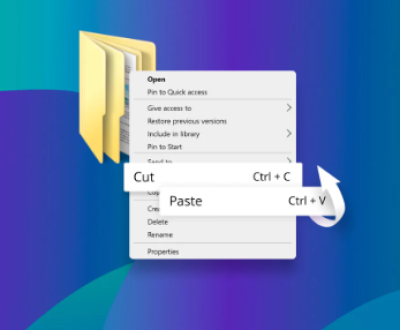In the digital age, hard disk data plays a crucial role in both personal and business aspects. However, data loss from hard disks can occur due to various reasons such as hardware failures, software glitches, accidental deletion, or even natural disasters. As a result, the demand for hard disk data recovery services has been on the rise.
Reasons for Data Loss and the Need for Recovery
There are numerous scenarios that lead to data loss on hard disks. Hardware issues like hard disk crashes due to mechanical failures (e.g., a malfunctioning read/write head or damaged platters), power surges that can fry the internal components of the disk, and problems with the disk controller are common causes. Software-related causes include virus attacks that corrupt files or delete them, improper formatting of the disk, and errors during operating system upgrades or installations.

Accidental deletion by users, either of individual files or entire folders, is also a frequent occurrence. In business settings, data loss can have serious consequences, from halting operations to losing valuable customer information and facing legal implications if data protection regulations are violated. For individuals, losing personal photos, important documents, or memories stored on the hard disk can be distressing. Hence, the need for reliable data recovery services becomes essential.
Types of Hard Disk Data Recovery
Logical Data Recovery
This type of recovery deals with issues where the hard disk’s physical components are intact, but there are problems with the file system or software. For example, if a file is accidentally deleted, the data is still physically present on the disk until it is overwritten. Logical recovery techniques involve using specialized software to scan the disk and attempt to rebuild the file system or retrieve the deleted files. This is usually less complex and less costly compared to physical data recovery.
Physical Data Recovery
When there is damage to the actual hardware of the hard disk, such as a damaged head or scratched platters, physical data recovery is required. This process involves opening the hard disk in a cleanroom environment (to prevent dust from contaminating the delicate internal parts) and replacing or repairing the damaged components. Then, the data is extracted using advanced equipment. Physical data recovery is much more challenging and expensive as it requires highly specialized skills and facilities.
RAID Data Recovery
RAID (Redundant Array of Independent Disks) systems are used in many businesses for data storage with built-in redundancy and improved performance. However, when a RAID array fails, recovering the data can be extremely complicated. It depends on the RAID level (e.g., RAID 0. RAID 1. RAID 5. etc.) and the nature of the failure (such as a failed hard disk within the array or a problem with the RAID controller). Specialized software and expertise are needed to reconstruct the data from the remaining healthy disks and restore the array’s functionality.
Factors Affecting Hard Disk Data Recovery Charges in 2025
Type of Data Loss
As mentioned earlier, logical data recovery is generally less expensive than physical data recovery. For simple cases of accidental file deletion or minor file system errors, the charges might range from a few tens to a couple of hundred dollars. On the other hand, physical data recovery, especially for severely damaged hard disks that require extensive repair work in a cleanroom, can cost thousands of dollars. RAID data recovery, depending on the complexity of the RAID setup and the extent of the failure, can also have significant costs, often falling in the range of several hundred to several thousand dollars.
Capacity of the Hard Disk
The larger the capacity of the hard disk, the more data there is to recover, and typically, the higher the charges. For a small-capacity hard disk (e.g., 120 GB or 250 GB) with logical data loss, the recovery cost might be relatively lower. However, for a high-capacity hard disk (e.g., several terabytes), even for logical recovery, the fee could increase due to the longer processing time and more complex scanning and retrieval operations. For physical recovery of large-capacity disks, the costs are even higher as it takes more resources and time to extract the data from the damaged components.
Urgency of the Recovery
If a customer requires expedited data recovery, for example, if the lost data is crucial for an ongoing business operation or a time-sensitive project, data recovery companies may charge a premium for prioritizing the job. Rush services can add anywhere from 20% to 50% or even more to the regular recovery charges, depending on the company’s policies and the specific circumstances.
Complexity of the File System
Some file systems, like NTFS (used in Windows), HFS+ (used in older Mac systems), or ext4 (used in Linux), have different structures and levels of complexity. Recovering data from a more complex file system may require more advanced software and greater expertise, which can drive up the charges. Additionally, if the hard disk contains encrypted data, decrypting it during the recovery process (assuming proper authorization is obtained) can add to the complexity and cost.
Reputation and Expertise of the Service Provider
Well-established and highly regarded data recovery companies with experienced technicians and a proven track record often charge higher fees. They invest in state-of-the-art equipment, maintain cleanroom facilities for physical recovery, and continuously train their staff to handle the latest data recovery challenges. However, customers are often willing to pay more for the assurance of a higher success rate and reliable service. In contrast, less reputable or inexperienced providers may offer lower prices, but there is a greater risk of unsuccessful recovery or further damage to the data.
Geographical Location
Data recovery charges can vary significantly depending on the region. In major metropolitan areas or regions with a high cost of living and a strong demand for technology services, the prices tend to be higher. For example, data recovery services in cities like New York, London, or Tokyo are likely to cost more compared to smaller towns or rural areas. This is due to factors such as higher operating costs for the service providers, including rent, staff salaries, and access to specialized resources.
Market Trends in Hard Disk Data Recovery Charges in 2025
Increasing Competition
The data recovery industry has seen a growth in the number of service providers over the years. With more competition, there is some downward pressure on prices, especially for common types of logical data recovery. However, for specialized and complex recovery services like physical data recovery and RAID data recovery, the impact of competition on prices is relatively limited as these require significant investment in equipment and expertise.
Technological Advancements
New data recovery technologies are constantly emerging, which can make the recovery process more efficient and potentially reduce costs in some cases. For example, improved software algorithms for logical recovery can speed up the scanning and retrieval of deleted files. However, the initial investment in these technologies by service providers may also lead to a short-term increase in prices as they recoup their expenses.
Data Protection Regulations
With stricter data protection laws being implemented in many countries, data recovery services are required to adhere to certain security and privacy standards. This may increase the operational costs for service providers, which could be passed on to customers in the form of slightly higher charges. For example, ensuring proper handling and storage of recovered data to comply with regulations like the GDPR in Europe or the CCPA in California can add to the overall cost structure.
Tips for Customers When Considering Hard Disk Data Recovery Charges
Get Multiple Quotes
Before choosing a data recovery service provider, it’s advisable to obtain quotes from several different companies. This allows customers to compare prices and services and make an informed decision. However, it’s important to ensure that the quotes are based on a detailed assessment of the data loss situation, including the type of hard disk, the cause of the loss, and the estimated complexity of the recovery.
Ask About the Success Rate
Inquire about the provider’s success rate in recovering data for similar cases. A high success rate indicates more experienced technicians and better techniques, but it may also be reflected in higher charges. Still, it’s better to pay a bit more for a higher chance of getting your data back rather than opting for a cheaper option with a low success rate.
Understand the Service Agreement
Carefully read the service agreement, including details about the charges, any additional fees for rush services or if further complications arise during the recovery process, and the liability of the service provider in case the data recovery is unsuccessful. Make sure you are clear about what you are agreeing to before signing up for the service.
Check for Reviews and References
Look for online reviews and ask the provider for references from past clients. Positive reviews and good references can give you confidence in the provider’s reliability and the quality of their service, which is crucial when entrusting them with your valuable data.
Hard disk data recovery charges in 2025 are influenced by a multitude of factors, ranging from the type of data loss and the capacity of the hard disk to the urgency of the recovery and the reputation of the service provider. Understanding these factors can help customers make more informed decisions when faced with the need for data recovery. As the industry continues to evolve with increasing competition, technological advancements, and stricter data protection regulations, it’s important for both service providers and customers to stay updated on the latest trends and best practices in the field of hard disk data recovery.
About us and this blog
Panda Assistant is built on the latest data recovery algorithms, ensuring that no file is too damaged, too lost, or too corrupted to be recovered.
Request a free quote
We believe that data recovery shouldn’t be a daunting task. That’s why we’ve designed Panda Assistant to be as easy to use as it is powerful. With a few clicks, you can initiate a scan, preview recoverable files, and restore your data all within a matter of minutes.
Subscribe to our newsletter!
More from our blog
See all postsRecent Posts
- Retrieve files from usb 2025-07-04
- How to retrieve overwritten excel file 2025-07-04
- How to retrieve lost files on sd card 2025-07-04

 Try lt Free
Try lt Free Recovery success rate of up to
Recovery success rate of up to









